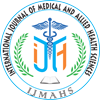N-Nitrosodimethylamine (NDMA) Synthesis in the Environment, its Toxicity and Modulation by Various Bio-Chemical Approaches: A Review
Pages : 86-93Download PDF
Abstract
N-Nitrosodimethylamine (NDMA) or dimethylnitrosamine (DMN) is a well-known hepatotoxin and nephrotoxin with carcinogenic properties. It is an organic compound produced during various industrial processes and as a reaction byproduct of several disinfectants. It is also found in many food items, such as cured or smoked meat, beer and even toiletry and cosmetic products. Severe liver and kidney damage has been linked to NDMA exposure, primarily attributed to mechanisms involving oxidative stress, DNA damage and subsequently liver fibrosis. In this review we have discussed about the sources of NDMA, its synthesis, metabolic breakdown and mechanisms underlying the generation of free radicals. A key aspect of NDMA toxicity involves the induction of oxidative stress. Metabolic activation of NDMA leads to the overproduction of reactive oxygen species (ROS), resulting in lipid peroxidation, protein modification, and DNA damage. The oxidative stress disrupts cellular redox homeostasis and activates inflammatory signaling pathways, further exacerbating tissue damage and contributing to the initiation and progression of carcinogenesis. We have discussed about its toxic effects in various in vitro and in vivo models, along with the phyto-therapeutic approaches that are being used to suppress the progression of NDMA induced toxicity. Advanced water treatment technologies such as reverse osmosis, activated carbon adsorption and advanced oxidation processes (AOPs) using UV-rays and hydrogen peroxide have shown some promising results. Additionally, studies using biological methods such as microbial degradation and enzymatic treatments are also being tested to break down NDMA in contaminated environments.





